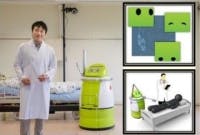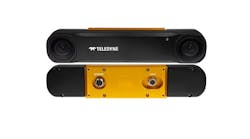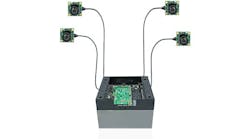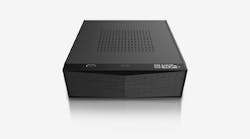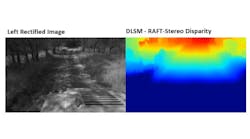Researchers from the Toyohashi University of Technology in Japan have developed a vision-guided autonomous robot, Terapio, which is designed to assist staff in delivering resources and recording rounds information, effectively replacing the conventional medical cart used by healthcare staff during hospital rounds.
MORE ARTICLES
Robots rising: 10 distinctly unique ways robots are being deployed
Vision Systems Design launches reader survey to identify imaging system hurdles
Terapio uses a differential-drive steering system to enable quiet operation and smooth omnidirectional mobility. It uses a CCD camera and a laser range finder to recognize its environment and autonomously track a specified staff member while avoiding obstacles. By using the robot’s ring-shaped power-assist handle, an operator can control the robot accurately by applying a slight force, when needed.
Terapio is also able to record patients’ personal and vital signs data, while also displaying data such as the patient's health records. A touch panel on top of Terapio is used for operating the robot and inputting/displaying round data. It is designed so that an operator and patient can recognize the robot’s status and actions by expressions shown on the LCD display—which acts as a face—that change according to the robot’s operation mode, which are "power assist," "tracking," and "rounds,” according to a press release.
"As we were developing Terapio, we could clearly imagine the human-robot symbiosis. By constantly promoting the pursuit of system integration technology, life with robots will be a reality in the near future," said assistant professor Ryosuke Tasaki. "An ongoing daily effort to incorporate high-tech robotics into our activities will be the best way to realize life in our future society."
The robot was designed with the idea of alleviating healthcare workers from physical tasks like pushing a cart around the hospital for round by sharing these duties with a robot. With Terapio, these workers can concentrate more on interacting with their patients and providing knowledgeable, kind, and compassionate care. Additionally, with the robots ability to interact and display “emotion,” it may elicit warmth and provide comfort to the humans with which it reacts, according to Toyohashi Tech.
The team of researchers from the university expects that "similar research will become widespread in the future as more people adopt a conciliatory approach to human-robot symbiosis."
View the press release.
View additional information on the Terapio robot.
Share your vision-related news by contacting James Carroll, Senior Web Editor, Vision Systems Design
To receive news like this in your inbox, click here.
Join our LinkedIn group | Like us on Facebook | Follow us on Twitter | Check us out on Google +
